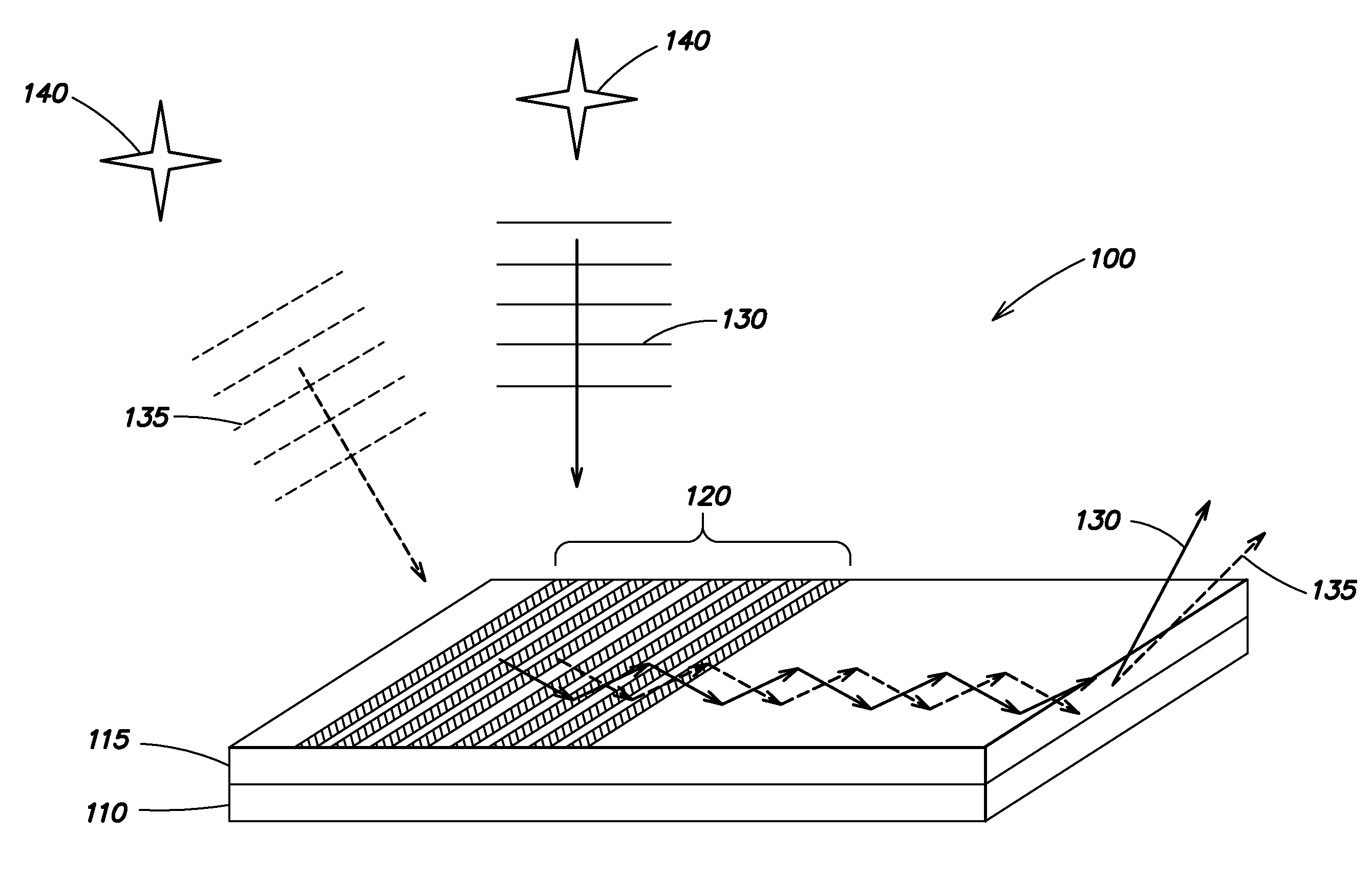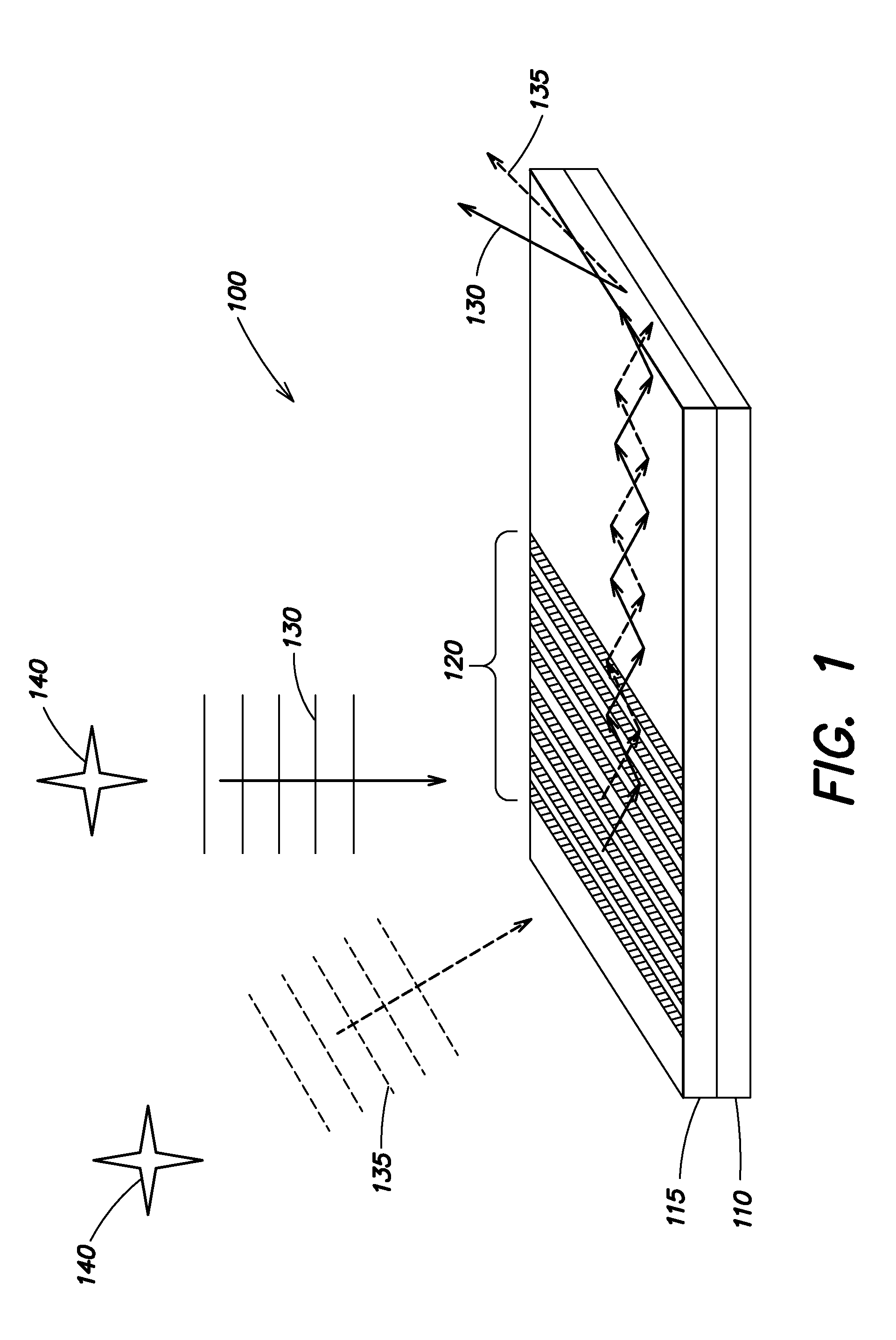Chip-scale star tracker
a star tracker and chip-scale technology, applied in the field of chip-scale star trackers, can solve the problems of bulky and large size of traditional star trackers, and achieve the effect of large light collection apertures
- Summary
- Abstract
- Description
- Claims
- Application Information
AI Technical Summary
Benefits of technology
Problems solved by technology
Method used
Image
Examples
Embodiment Construction
[0022]As discussed above, traditional star trackers are typically large due to the need for a large optical aperture to achieve sufficiently high resolution imaging, which generally results in the system having a large focal (and physical) length. However, in many applications it may be desirable to minimize the size and weight of the star tracker system. In a chip-scale star tracker system according to aspects and embodiments of the present invention, focal length has no meaning because the light is not imaged as in a traditional lens or mirror based system, but is instead coupled and filtered into a planar light-guide structure patterned on a layered wafer substrate. The captured light propagates within the wafer material and is detected at the edges of the wafer with low noise photo-detectors. The detected light is analyzed to obtain the detailed propagation characteristics which determine the star angle, as discussed further below. Thus, aspects and embodiments are directed to a...
PUM
 Login to View More
Login to View More Abstract
Description
Claims
Application Information
 Login to View More
Login to View More - R&D
- Intellectual Property
- Life Sciences
- Materials
- Tech Scout
- Unparalleled Data Quality
- Higher Quality Content
- 60% Fewer Hallucinations
Browse by: Latest US Patents, China's latest patents, Technical Efficacy Thesaurus, Application Domain, Technology Topic, Popular Technical Reports.
© 2025 PatSnap. All rights reserved.Legal|Privacy policy|Modern Slavery Act Transparency Statement|Sitemap|About US| Contact US: help@patsnap.com



